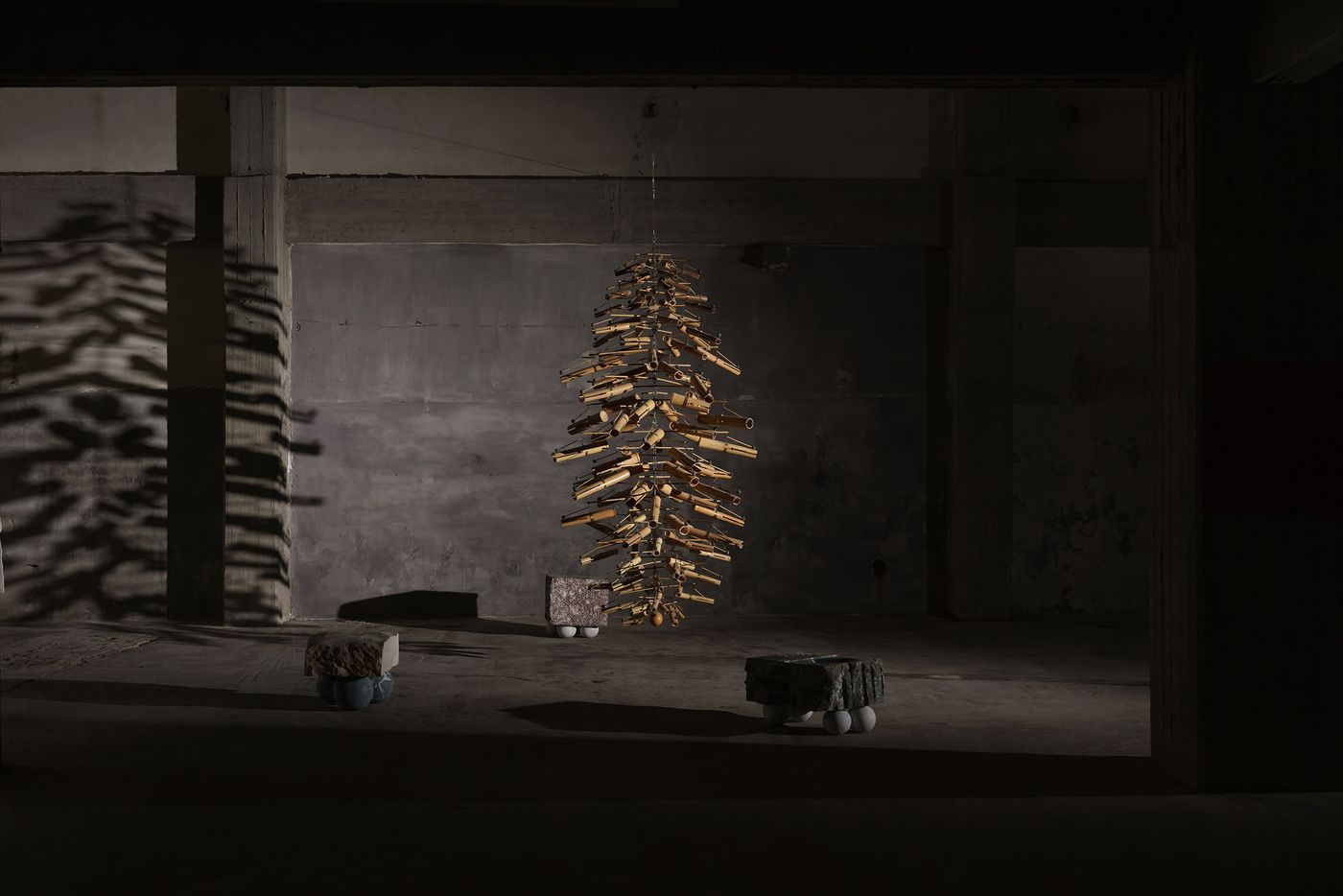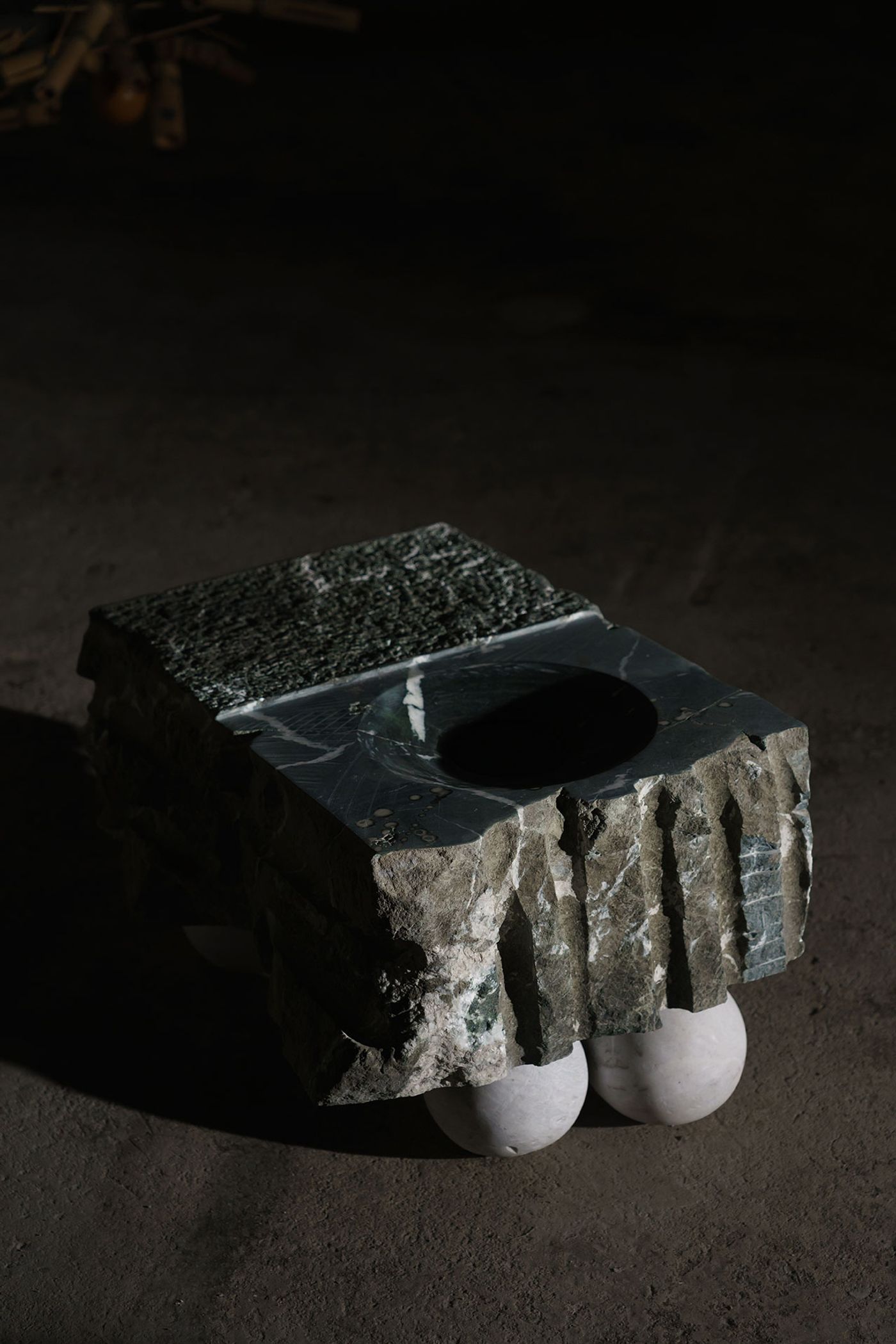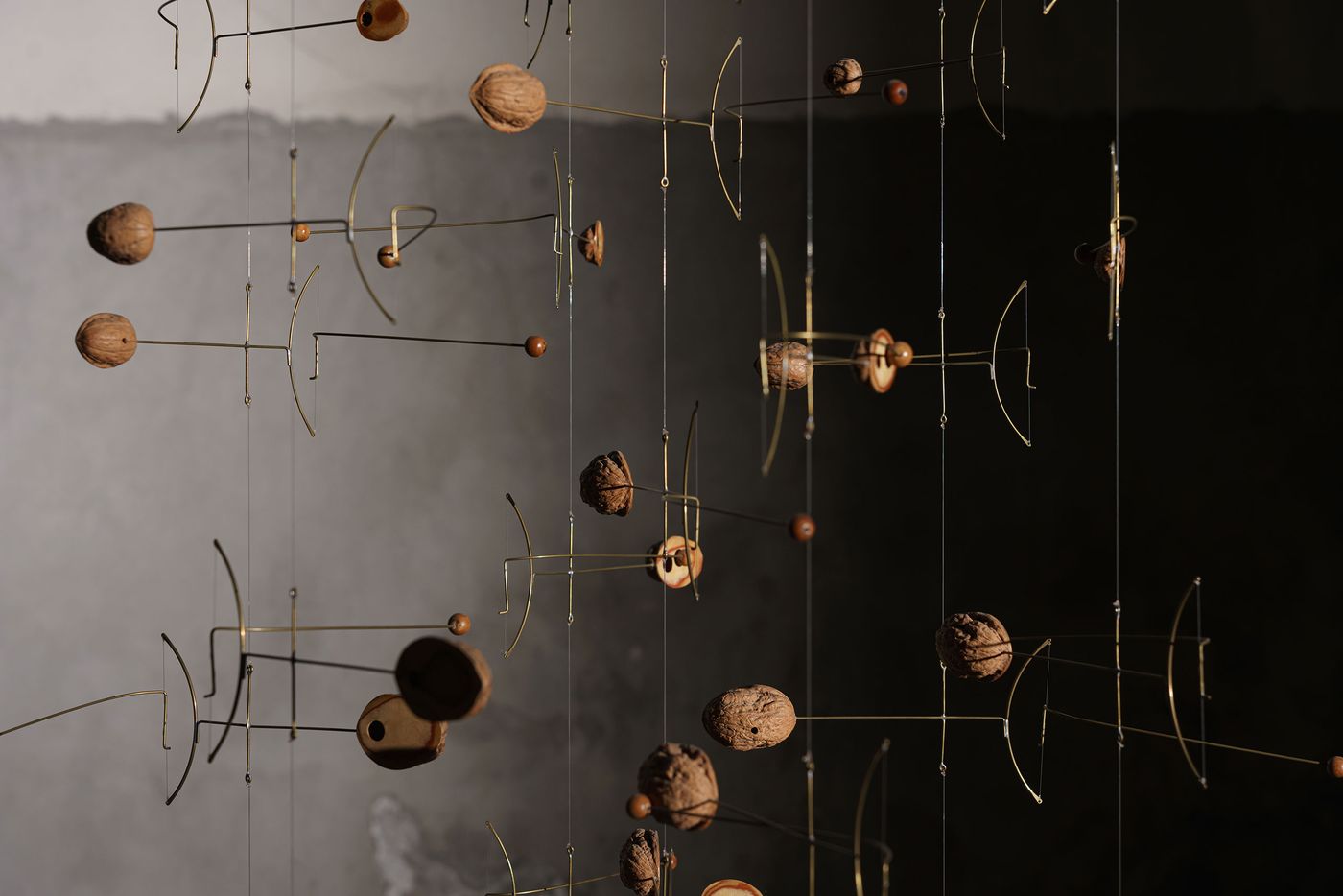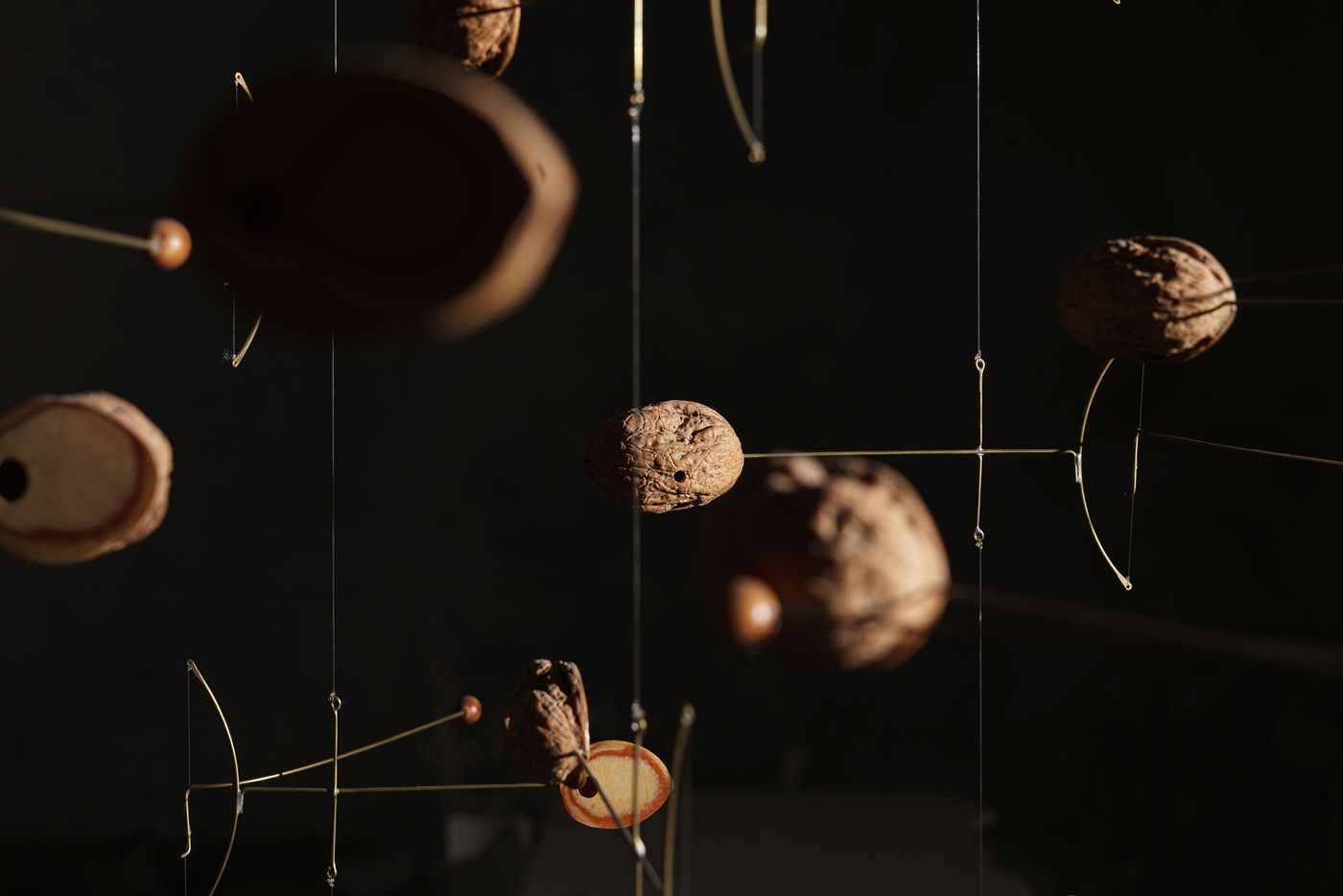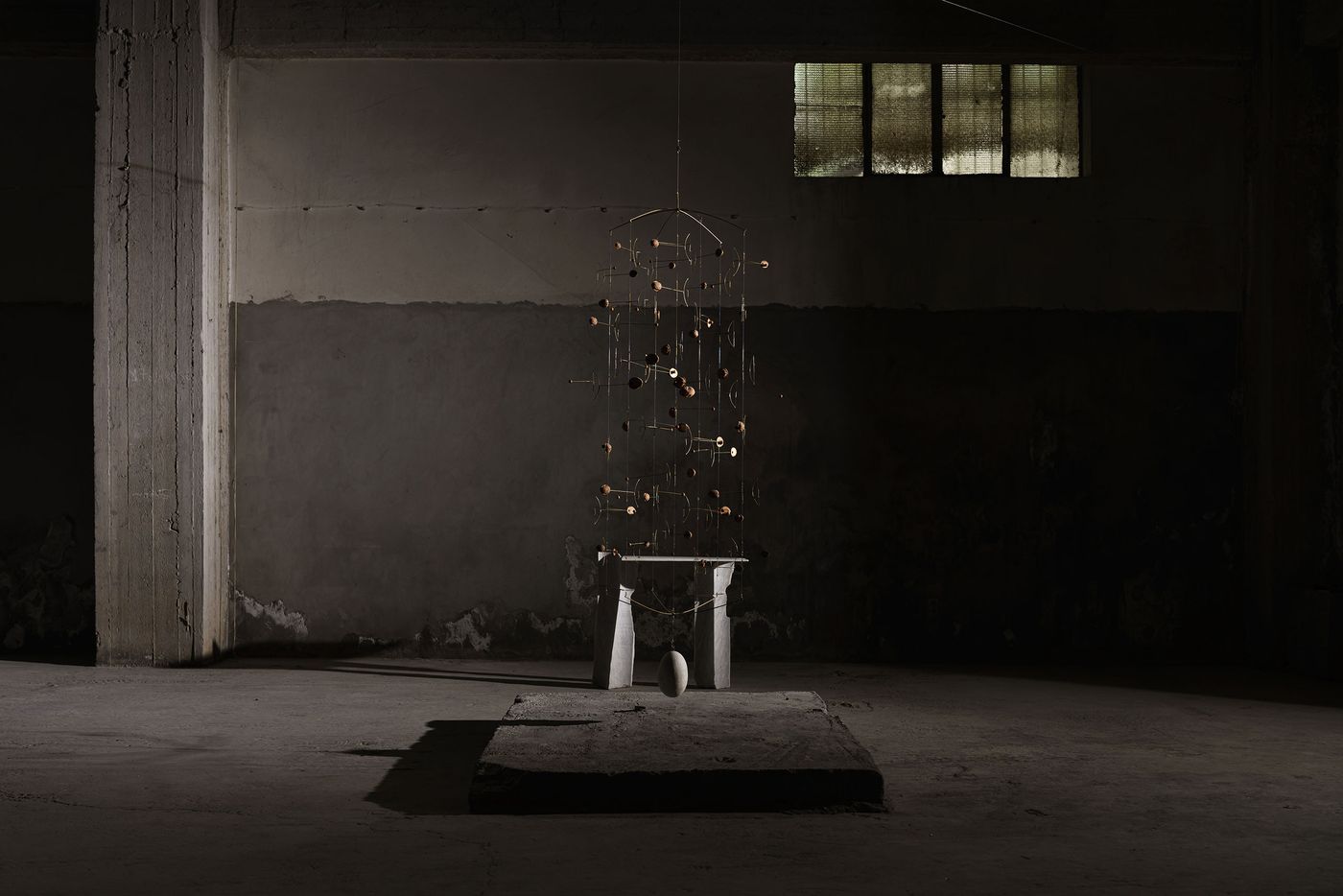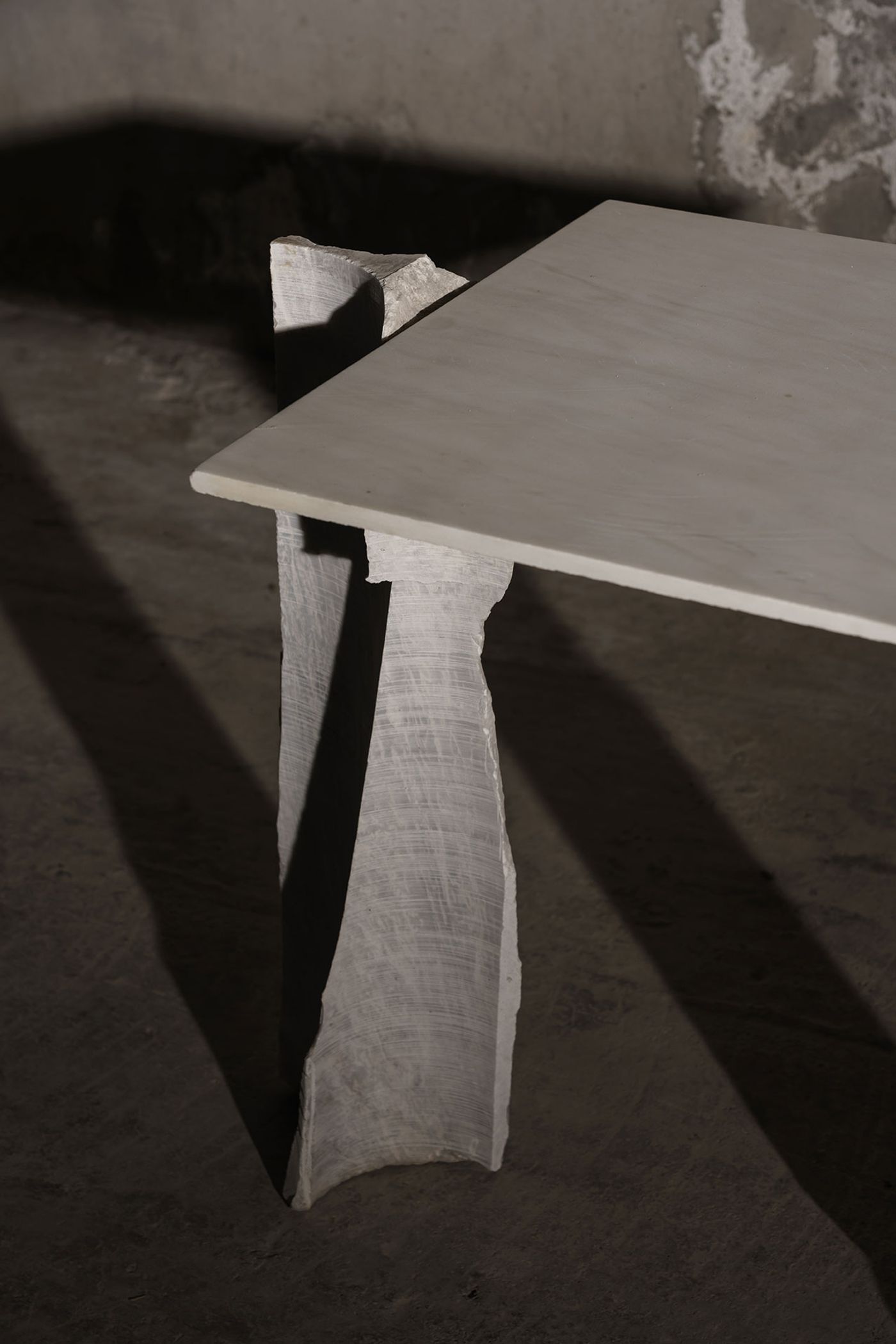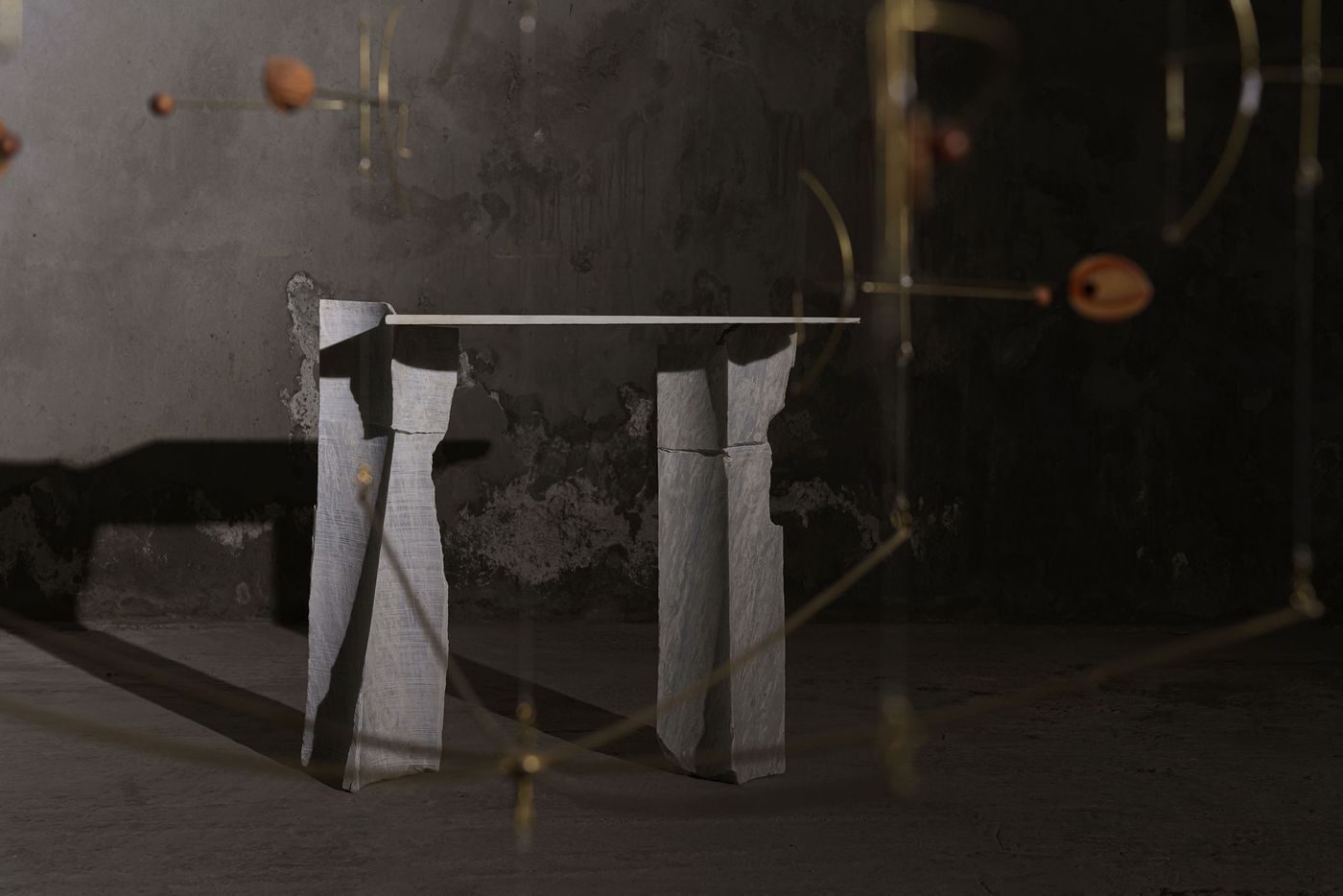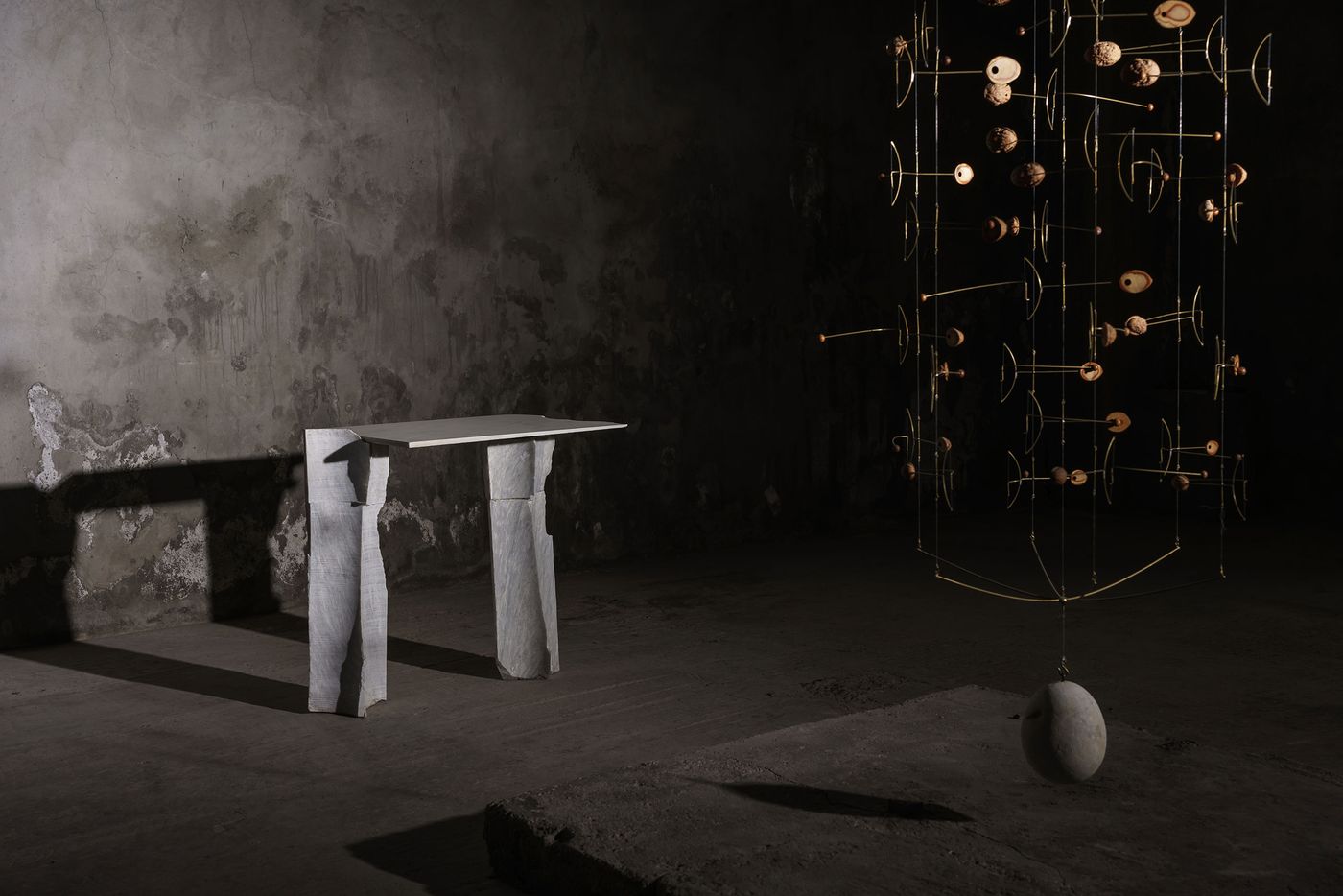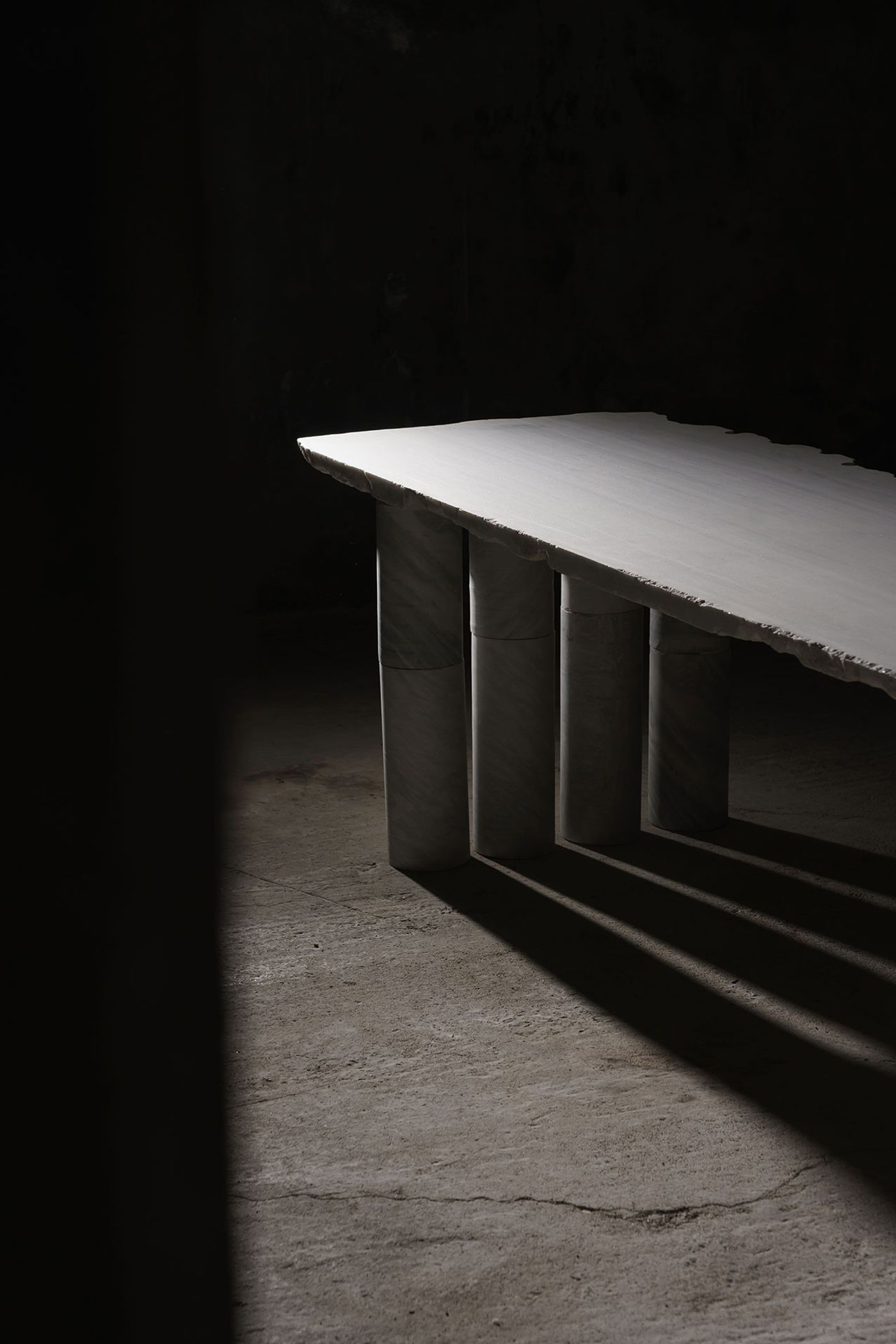
Artists Theodore Psychoyos & Raoul de Pesters Converse in a Former Ouzo Distillery in Piraeus
Words by Eric David
Location
Piraeus, Greece
Artists Theodore Psychoyos & Raoul de Pesters Converse in a Former Ouzo Distillery in Piraeus
Words by Eric David
Piraeus, Greece
Piraeus, Greece
Location
There is something about post-industrial facilities that makes them a good match for contemporary art – look no further than Tate Modern in London (a former power station), Fondazione Prada in Milan (a former gin distillery), and Zeitz MOCAA in Cape Town (a former grain silo complex). Abundant floorspace and cathedral-like proportions are ideal for showcasing large-scale sculptures and installations, while the meditative ambience of such spaces is conducive to the reflection and concentration that art viewing requires. Practicalities aside, the cultural takeover of former bastions of industrialization also carries a symbolic meaning: the power of art to affect change, as such projects can promote sustainable development and revitalize communities.
So when we were invited to attend the preview of “Sans Rival”, an artistic dialogue between artists Theodore Psychoyos and Raoul de Pesters in a former ouzo distillery in the Greek port of Piraeus on view until June 21, 2023, we had no doubt that the ghostly former factory would be the perfect setting to display both Psychoyos’ hefty marble sculptures and de Peters’ ethereal, jingling mobiles; and it was. What we hadn’t anticipated was the venue’s evocative power to intertwine such contrasting artworks “in a state of perfect balance”, as curator Stamatia Dimitrakopoulos rightly says, by imbuing them with poetic resonance.

SANS RIVAL exhibition by Theodore Psychoyos and Raoul Maria de Pesters Converse.
Curated by Stamatia Dimitrakopoulos.
Installation view, Kaminia, Piraeus, Greece, June 2023.
Photography by Bill Stamatopoulos © Yatzerlab.

SANS RIVAL exhibition by Theodore Psychoyos and Raoul Maria de Pesters Converse.
Curated by Stamatia Dimitrakopoulos.
Installation view, Kaminia, Piraeus, Greece, June 2023.
Photography by Bill Stamatopoulos © Yatzerlab.

SANS RIVAL exhibition by Theodore Psychoyos and Raoul Maria de Pesters Converse.
Curated by Stamatia Dimitrakopoulos.
Installation view, Kaminia, Piraeus, Greece, June 2023.
Photography by Bill Stamatopoulos © Yatzerlab.

SANS RIVAL exhibition by Theodore Psychoyos and Raoul Maria de Pesters Converse.
Curated by Stamatia Dimitrakopoulos.
Installation view, Kaminia, Piraeus, Greece, June 2023.
Photography by Bill Stamatopoulos © Yatzerlab.
Located in Kaminia, a working class district of Piraeus where industrial warehouses and workshops are mixed with apartment buildings and modest houses, the former distillery was home to the historic ouzo brand Sans Rival, wherefrom the exhibition takes its name, for more than 80 years until the production facilities moved to another location following the company’s buyout in the late 2000s. Renamed “Kaminos 44” on account of its neighborhood – kaminos, the Greek word for kiln or furnace, is the singular of Kaminia – the former distillery, was recently repurposed by Molonglo for various artistic production and manufacturing. Stripped down to its brutalist concrete core, the building’s open-plan floor plates, mezzanines, voids and courtyards have been repurposed to host various forms of artistic production and manufacturing, beginning with Greek artist Theodore Psychoyos whose marble οobjects were cut, sculpted and assembled on site.

SANS RIVAL exhibition by Theodore Psychoyos and Raoul Maria de Pesters Converse.
Curated by Stamatia Dimitrakopoulos.
Installation view, Kaminia, Piraeus, Greece, June 2023.
Photography by Bill Stamatopoulos © Yatzerlab.
Known for his large-scale ink drawings and murals, Theodore Psychoyos is constantly exploring new means of artistic expression as his most recent work of reclaimed marble attest. Taking the form of functional objects like tables, stools and chairs, the artworks are made out of discarded pieces of marble, casualties of technological advancements in marble processing in the 20th century. Eschewing the shapely forms and clean-cut lines associated with marble-crafting, Psychoyos sticks to minimal interventions in order to preserve their intricate weathered patterns and imperfections as a celebration of their unique predicament — abandoned for decades in warehouses and quarries, the found pieces bear the marks of the human hand and machinery as well as the elements making them exceptionally rare.

SANS RIVAL exhibition by Theodore Psychoyos and Raoul Maria de Pesters Converse.
Curated by Stamatia Dimitrakopoulos.
Installation view, Kaminia, Piraeus, Greece, June 2023.
Photography by Bill Stamatopoulos © Yatzerlab.

SANS RIVAL exhibition by Theodore Psychoyos and Raoul Maria de Pesters Converse.
Curated by Stamatia Dimitrakopoulos.
Installation view, Kaminia, Piraeus, Greece, June 2023.
Photography by Bill Stamatopoulos © Yatzerlab.
Make no mistake though, there is nothing haphazard or simplistic about this artist’s work; artfully assembled into intricate configurations, with small rubber elements sometimes inserted for stability and comfort, Psychoyos’ creations convey a powerful sense of materiality, their unrefined sensibility and stern profile balanced by their geometric gracefulness, poised minimalism, and in some instances unruly botanicals. The latter are the work of London-base floral stylist and botanical designer Alina Dheere who collaborated with Psychoyos to further underline the primal nature of his work.

SANS RIVAL exhibition by Theodore Psychoyos and Raoul Maria de Pesters Converse.
Curated by Stamatia Dimitrakopoulos.
Installation view, Kaminia, Piraeus, Greece, June 2023.
Photography by Bill Stamatopoulos © Yatzerlab.
Inspired as a young artist in the 1960s by Op Art and Kinetic Art movements, Swiss sculptor Raoul de Pesters has been exploring the intersection of sound and movement ever since with his “mobiles sonores”, or sound sculptures, which upon first glance couldn’t be more different to Psychoyos’ artworks. Whereas the latter are characterized by their robustness and heftiness, de Pesters’ pieces revel in their lightweight construction, complex movements and resounding sounds. On closer inspection though, one sees that the two artists share an affinity for found objects, natural materials and elemental forms — strolling through the exhibition we spotted walnut husks, hollowed out pumpkins, bamboo sections, corks, metal cans and horseshoes in de Pesters’ work on display. Assembled in intricate compositions and invisibly suspended from the ceiling, his series of smaller and larger mobiles produced a symphony of plinking, whistling and rattling sounds as visitors moving through the exhibition set them in motion. Softly reverberating in the venue’s stripped-down interior, the sounds composed an eerie soundtrack to the hypnotic choreography of the dancing mobiles.

SANS RIVAL exhibition by Theodore Psychoyos and Raoul Maria de Pesters Converse.
Curated by Stamatia Dimitrakopoulos.
Installation view, Kaminia, Piraeus, Greece, June 2023.
Photography by Bill Stamatopoulos © Yatzerlab.
Immersed, as the curator says “within a dialogue between matter and void, silence and sound”, more parallels and juxtapositions arise between the two artists underpinned by a shared mission to investigate nature and its manifested forms – where one explores the concept of gravity and balance, the other looks to movement and chance. Walking around the run-down industrial setting, another similarity comes to mind; both series seem to be the products of a post-apocalyptic civilization seeking meaning through the transformative power of art.

SANS RIVAL exhibition by Theodore Psychoyos and Raoul Maria de Pesters Converse.
Curated by Stamatia Dimitrakopoulos.
Installation view, Kaminia, Piraeus, Greece, June 2023.
Photography by Bill Stamatopoulos © Yatzerlab.

SANS RIVAL exhibition by Theodore Psychoyos and Raoul Maria de Pesters Converse.
Curated by Stamatia Dimitrakopoulos.
Installation view, Kaminia, Piraeus, Greece, June 2023.
Photography by Bill Stamatopoulos © Yatzerlab.

SANS RIVAL exhibition by Theodore Psychoyos and Raoul Maria de Pesters Converse.
Curated by Stamatia Dimitrakopoulos.
Installation view, Kaminia, Piraeus, Greece, June 2023.
Photography by Bill Stamatopoulos © Yatzerlab.

SANS RIVAL exhibition by Theodore Psychoyos and Raoul Maria de Pesters Converse.
Curated by Stamatia Dimitrakopoulos.
Installation view, Kaminia, Piraeus, Greece, June 2023.
Photography by Bill Stamatopoulos © Yatzerlab.

SANS RIVAL exhibition by Theodore Psychoyos and Raoul Maria de Pesters Converse.
Curated by Stamatia Dimitrakopoulos.
Installation view, Kaminia, Piraeus, Greece, June 2023.
Photography by Bill Stamatopoulos © Yatzerlab.

SANS RIVAL exhibition by Theodore Psychoyos and Raoul Maria de Pesters Converse.
Curated by Stamatia Dimitrakopoulos.
Installation view, Kaminia, Piraeus, Greece, June 2023.
Photography by Bill Stamatopoulos © Yatzerlab.

SANS RIVAL exhibition by Theodore Psychoyos and Raoul Maria de Pesters Converse.
Curated by Stamatia Dimitrakopoulos.
Installation view, Kaminia, Piraeus, Greece, June 2023.
Photography by Bill Stamatopoulos © Yatzerlab.

SANS RIVAL exhibition by Theodore Psychoyos and Raoul Maria de Pesters Converse.
Curated by Stamatia Dimitrakopoulos.
Installation view, Kaminia, Piraeus, Greece, June 2023.
Photography by Bill Stamatopoulos © Yatzerlab.

SANS RIVAL exhibition by Theodore Psychoyos and Raoul Maria de Pesters Converse.
Curated by Stamatia Dimitrakopoulos.
Installation view, Kaminia, Piraeus, Greece, June 2023.
Photography by Bill Stamatopoulos © Yatzerlab.

SANS RIVAL exhibition by Theodore Psychoyos and Raoul Maria de Pesters Converse.
Curated by Stamatia Dimitrakopoulos.
Installation view, Kaminia, Piraeus, Greece, June 2023.
Photography by Bill Stamatopoulos © Yatzerlab.

SANS RIVAL exhibition by Theodore Psychoyos and Raoul Maria de Pesters Converse.
Curated by Stamatia Dimitrakopoulos.
Installation view, Kaminia, Piraeus, Greece, June 2023.
Photography by Bill Stamatopoulos © Yatzerlab.

SANS RIVAL exhibition by Theodore Psychoyos and Raoul Maria de Pesters Converse.
Curated by Stamatia Dimitrakopoulos.
Installation view, Kaminia, Piraeus, Greece, June 2023.
Photography by Bill Stamatopoulos © Yatzerlab.

SANS RIVAL exhibition by Theodore Psychoyos and Raoul Maria de Pesters Converse.
Curated by Stamatia Dimitrakopoulos.
Installation view, Kaminia, Piraeus, Greece, June 2023.
Photography by Bill Stamatopoulos © Yatzerlab.

SANS RIVAL exhibition by Theodore Psychoyos and Raoul Maria de Pesters Converse.
Curated by Stamatia Dimitrakopoulos.
Installation view, Kaminia, Piraeus, Greece, June 2023.
Photography by Bill Stamatopoulos © Yatzerlab.

SANS RIVAL exhibition by Theodore Psychoyos and Raoul Maria de Pesters Converse.
Curated by Stamatia Dimitrakopoulos.
Installation view, Kaminia, Piraeus, Greece, June 2023.
Photography by Bill Stamatopoulos © Yatzerlab.

SANS RIVAL exhibition by Theodore Psychoyos and Raoul Maria de Pesters Converse.
Curated by Stamatia Dimitrakopoulos.
Installation view, Kaminia, Piraeus, Greece, June 2023.
Photography by Bill Stamatopoulos © Yatzerlab.

SANS RIVAL exhibition by Theodore Psychoyos and Raoul Maria de Pesters Converse.
Curated by Stamatia Dimitrakopoulos.
Installation view, Kaminia, Piraeus, Greece, June 2023.
Photography by Bill Stamatopoulos © Yatzerlab.

SANS RIVAL exhibition by Theodore Psychoyos and Raoul Maria de Pesters Converse.
Curated by Stamatia Dimitrakopoulos.
Installation view, Kaminia, Piraeus, Greece, June 2023.
Photography by Bill Stamatopoulos © Yatzerlab.

SANS RIVAL exhibition by Theodore Psychoyos and Raoul Maria de Pesters Converse.
Curated by Stamatia Dimitrakopoulos.
Installation view, Kaminia, Piraeus, Greece, June 2023.
Photography by Bill Stamatopoulos © Yatzerlab.

SANS RIVAL exhibition by Theodore Psychoyos and Raoul Maria de Pesters Converse.
Curated by Stamatia Dimitrakopoulos.
Installation view, Kaminia, Piraeus, Greece, June 2023.
Photography by Bill Stamatopoulos © Yatzerlab.

SANS RIVAL exhibition by Theodore Psychoyos and Raoul Maria de Pesters Converse.
Curated by Stamatia Dimitrakopoulos.
Installation view, Kaminia, Piraeus, Greece, June 2023.
Photography by Bill Stamatopoulos © Yatzerlab.

SANS RIVAL exhibition by Theodore Psychoyos and Raoul Maria de Pesters Converse.
Curated by Stamatia Dimitrakopoulos.
Installation view, Kaminia, Piraeus, Greece, June 2023.
Photography by Bill Stamatopoulos © Yatzerlab.

SANS RIVAL exhibition by Theodore Psychoyos and Raoul Maria de Pesters Converse.
Curated by Stamatia Dimitrakopoulos.
Installation view, Kaminia, Piraeus, Greece, June 2023.
Photography by Bill Stamatopoulos © Yatzerlab.

SANS RIVAL exhibition by Theodore Psychoyos and Raoul Maria de Pesters Converse.
Curated by Stamatia Dimitrakopoulos.
Installation view, Kaminia, Piraeus, Greece, June 2023.
Photography by Bill Stamatopoulos © Yatzerlab.

SANS RIVAL exhibition by Theodore Psychoyos and Raoul Maria de Pesters Converse.
Curated by Stamatia Dimitrakopoulos.
Installation view, Kaminia, Piraeus, Greece, June 2023.
Photography by Bill Stamatopoulos © Yatzerlab.

SANS RIVAL exhibition by Theodore Psychoyos and Raoul Maria de Pesters Converse.
Curated by Stamatia Dimitrakopoulos.
Installation view, Kaminia, Piraeus, Greece, June 2023.
Photography by Bill Stamatopoulos © Yatzerlab.

SANS RIVAL exhibition by Theodore Psychoyos and Raoul Maria de Pesters Converse.
Curated by Stamatia Dimitrakopoulos.
Installation view, Kaminia, Piraeus, Greece, June 2023.
Photography by Bill Stamatopoulos © Yatzerlab.

SANS RIVAL exhibition by Theodore Psychoyos and Raoul Maria de Pesters Converse.
Curated by Stamatia Dimitrakopoulos.
Installation view, Kaminia, Piraeus, Greece, June 2023.
Photography by Bill Stamatopoulos © Yatzerlab.

SANS RIVAL exhibition by Theodore Psychoyos and Raoul Maria de Pesters Converse.
Curated by Stamatia Dimitrakopoulos.
Installation view, Kaminia, Piraeus, Greece, June 2023.
Photography by Bill Stamatopoulos © Yatzerlab.

SANS RIVAL exhibition by Theodore Psychoyos and Raoul Maria de Pesters Converse.
Curated by Stamatia Dimitrakopoulos.
Installation view, Kaminia, Piraeus, Greece, June 2023.
Photography by Bill Stamatopoulos © Yatzerlab.

SANS RIVAL exhibition by Theodore Psychoyos and Raoul Maria de Pesters Converse.
Curated by Stamatia Dimitrakopoulos.
Installation view, Kaminia, Piraeus, Greece, June 2023.
Photography by Bill Stamatopoulos © Yatzerlab.

SANS RIVAL exhibition by Theodore Psychoyos and Raoul Maria de Pesters Converse.
Curated by Stamatia Dimitrakopoulos.
Installation view, Kaminia, Piraeus, Greece, June 2023.
Photography by Bill Stamatopoulos © Yatzerlab.

SANS RIVAL exhibition by Theodore Psychoyos and Raoul Maria de Pesters Converse.
Curated by Stamatia Dimitrakopoulos.
Installation view, Kaminia, Piraeus, Greece, June 2023.
Photography by Bill Stamatopoulos © Yatzerlab.

SANS RIVAL exhibition by Theodore Psychoyos and Raoul Maria de Pesters Converse.
Curated by Stamatia Dimitrakopoulos.
Installation view, Kaminia, Piraeus, Greece, June 2023.
Photography by Bill Stamatopoulos © Yatzerlab.

SANS RIVAL exhibition by Theodore Psychoyos and Raoul Maria de Pesters Converse.
Curated by Stamatia Dimitrakopoulos.
Installation view, Kaminia, Piraeus, Greece, June 2023.
Photography by Bill Stamatopoulos © Yatzerlab.

SANS RIVAL exhibition by Theodore Psychoyos and Raoul Maria de Pesters Converse.
Curated by Stamatia Dimitrakopoulos.
Installation view, Kaminia, Piraeus, Greece, June 2023.
Photography by Bill Stamatopoulos © Yatzerlab.

SANS RIVAL exhibition by Theodore Psychoyos and Raoul Maria de Pesters Converse.
Curated by Stamatia Dimitrakopoulos.
Installation view, Kaminia, Piraeus, Greece, June 2023.
Photography by Bill Stamatopoulos © Yatzerlab.
